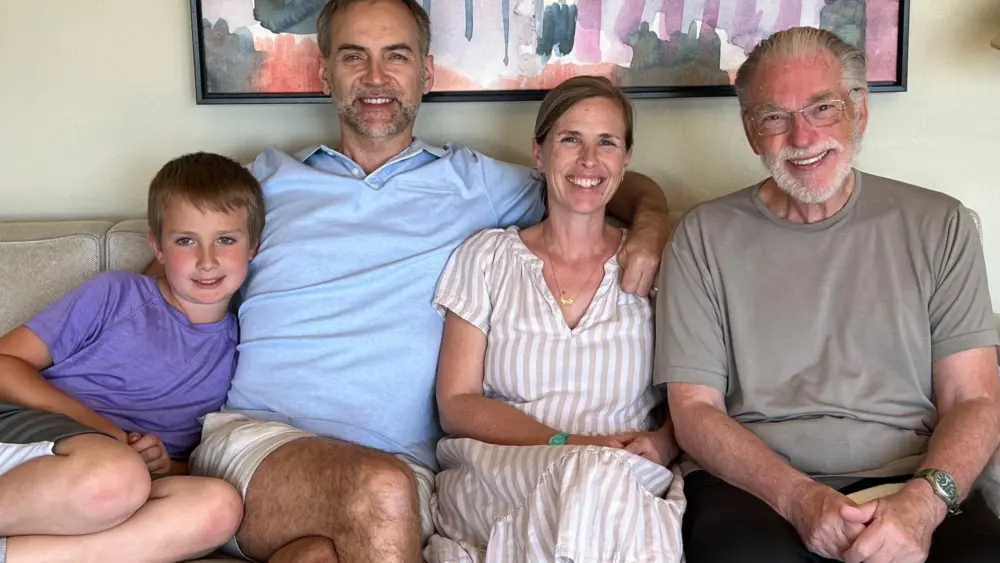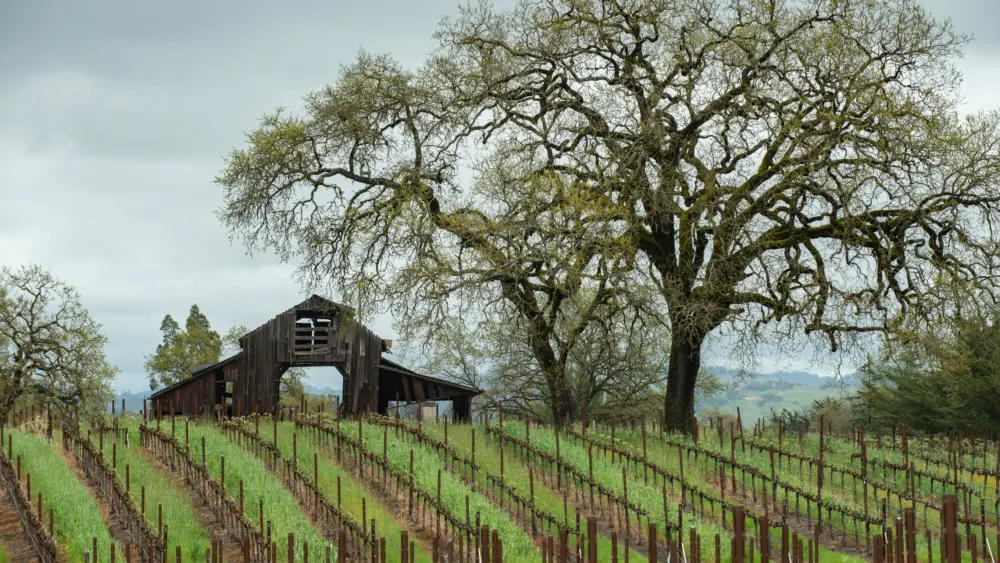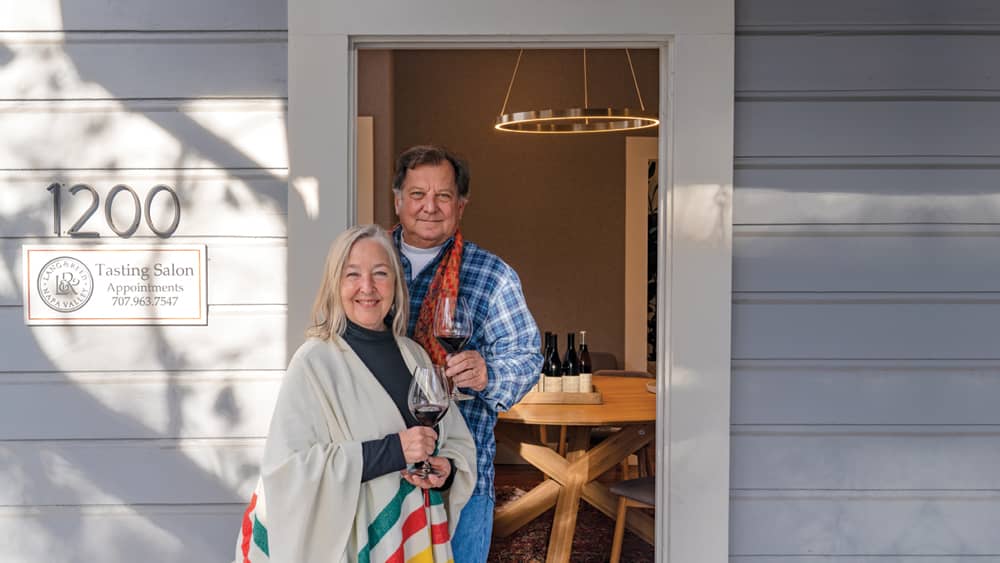
The founders of St. Helena-based Lang & Reed Napa Valley—John and Tracey Skupny—make deliciously different wines. Unlike many of their Napa Valley peers whose wines are made primarily from Cabernet Sauvignon or Chardonnay grapes, Lang & Reed instead focus their efforts on crafting wines from small—increasingly rare—vineyards of Cabernet Franc and Chenin Blanc.
As exemplified by the wines they produce, the Skupnys don’t shy away from taking the path less travelled, combining both iconoclastic innovation with savvy business instinct. What drives a couple with working-class backgrounds (he born in Detroit and she growing up in Kansas) to embark on such a wine-centric journey? A shared love of wine and a passion for living a vintner’s life
The early days
“Growing up in Detroit in the 1950s, we had big family gatherings with lots of different heritages—Polish, German, Italian and English,” says John. “There was always plenty of imbibing going on, and wine was a part of that, but wine wasn’t culturally engrained in me. It wasn’t until my college days and work at the restaurant that it became a thing.”
Both attended the University of Kansas—Tracey studied biology and botany, while John focused on painting and printmaking. Both also ended up working at the finest restaurant in the area—the historic “Free-State Hotel,” the Eldridge House Hotel in Lawrence.
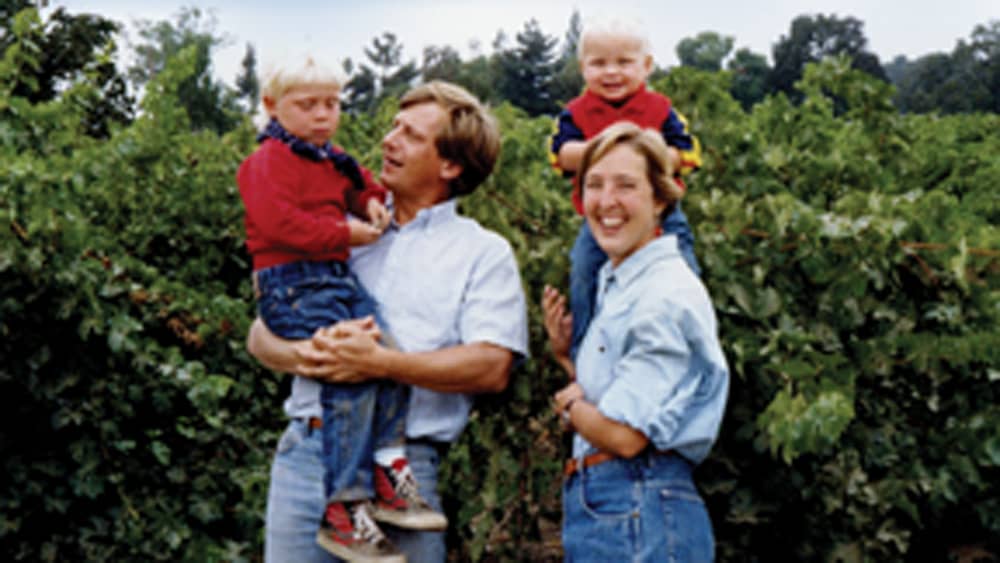
Originally built in 1855, the hotel was burned down multiple times by pro-slavery militias, first in 1856 by Sheriff Sam Jones and then again in 1863 by Quantrill’s Raiders. Each time it was destroyed (a total of four times), Col. Shalor Eldridge rebuilt and expanded the hotel, vowing to do the same no matter how many times it was destroyed. Since then the hotel and its associated restaurant have been a beacon for those seeking refuge and a place to commune around good food and wine.
“During college, I worked as the assistant manager and the ‘pooling agent,’ which meant I did all the buying of beer, spirits and wine, and Tracey was waiting tables. We were both learning a lot about wine,” John says. “Because Kansas hadn’t repealed Prohibition, any liquor sales needed to jump through a bunch of hoops, and only ‘members’ with a special card might purchase alcohol on the premises. But as the pooling agent I had to purchase all of the alcohol from retail stores on their behalf. It was a crazy law, but it gave me my first exposure to the world of wine, even a few of the early California wines like Caymus, Clos du Val, Ridge and Mondavi.”
Tracey graduated from college in 1977—a year after John. The couple had dated, but grew apart, each deciding to take a break from one another and travel in different directions—Tracey to her aunt and uncle’s home in Zurich, Switzerland, and John with friends to Ecuador.
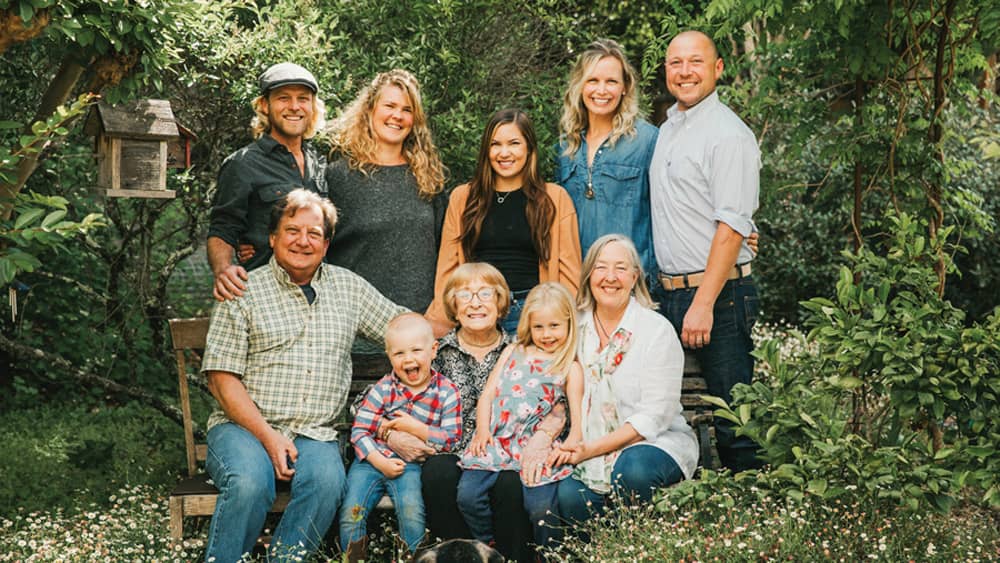
“Come around June my friend was ready to head home, but I realized I was going to lose something really special if I didn’t get to Zurich right away,” says John. Because his revelation was in the days before faxes or email, he sent Tracey three telegrams and a few days later got a response—permission to come join her in Zurich. John scraped together his remaining pennies and flew to Europe with the intention of proposing. “When I arrived we stayed at a tiny hotel in Luxembourg, and Tracey had a bottle of the newly released ’73 Mouton Rothschild sitting out on a table already being decanted,” John says. “We both knew how special that wine was, so I took that as a very good sign.”
Before the couple finished the bottle of wine he asked her to marry him, and she agreed. The couple spent the next week traveling and exploring some of the greatest wine regions of France—Champagne and Bordeaux—as they waited for their marriage license application to be approved in Zurich.
When they got the news that their application was approved, they were in Saint-Émilion. They celebrated the news by enjoying a glass of Cheval Blanc, a wine made principally with Cabernet Franc and often thought of as the “First Growth” of the Right Bank, referring to its location relative to the Dordogne river, which bisects the Bordeaux region of France.
At the time Tracey said, “Wow, this is fantastic wine. If we ever make a wine, I hope it’s like this.”
Back in Kansas, the couple re-entered the world of restaurants with the idea of gaining more experience and saving up enough money to open their own fine-dining establishment. However, by 1979, it was clear they weren’t destined not for a life as restaurateurs, but instead for a life focused on wine.
After John started a new position at Plaza III as a wine steward, the restaurant sent the couple on a trip to the Napa Valley in 1979 to seek out new wines for the list. They toured more than a dozen wineries and met Chuck Wagner at Caymus Vineyards. They hit it off and ended up having dinner with him at the Calistoga Inn.
“After that trip we had our path,” John says. “We knew we needed to move to California.”
Heading west
Heading to California to venture into the wine business in the late 1970s or early ’80s wasn’t exactly unheard of. Since the late 1960s, there had been a steady influx of adventurous souls looking to become California vintners, but even so, it was a risky move for the young couple.
“We’d never even been to California prior to that trip and we had no network here, but we both knew some of the important winemakers and there was such a great energy in this place,” says John. “But in 1980, we moved out anyway, although those first six months were pretty scary.”
By the fall, John had started work at Vintage Wine Merchants, helping craft national sales and marketing efforts for many Napa Valley wineries, including Chateau Montelena, Sutter Home and Raymond. “It was like going to graduate school,” he says. “I learned so much about California wine and the marketing and sales of wine.”
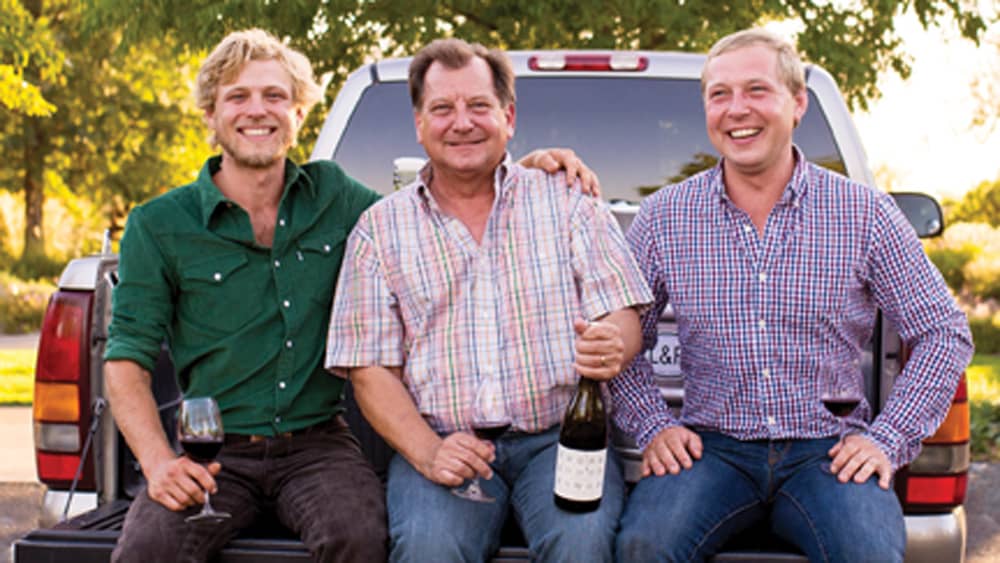
Tracey eventually found work in the accounting department at Del Monte, taking the job primarily because of the good benefits as the couple planned to start a family.
The jobs also paid decent salaries, which was important because the San Francisco apartment they moved into cost “three times the rent we’d paid in Kansas City and was about one-third the size of our living room today,” John recalls.
Small though it was, their new home had a cellar-like space under the porch that they imagined might be the perfect spot for making homemade wine. But where to get the grapes?
Homemade wine
A friend, artist and vintner Channing Rudd, had told the Skupnys how some vineyard owners would sell (or even give away) “second crop” grapes that were left unpicked during the initial harvest.
“I had stayed in touch with Chuck [Wagner], and we stopped by on a rainy day after failing to procure any second-crop grapes from Bella Oaks vineyard,” says John. “Tracey told Chuck how disappointed we were, and he immediately offered that we could pick any of the remaining Zinfandel grapes from the vineyard in front of his house.”
The couple jumped at the chance, gathering as many clusters as they could fit into two new trash cans they had purchased for their inaugural vintage. John says the first vintage was “just okay, but Tracey was too embarrassed to let me share any.”
The couple has made wine nearly every year since, although their sources of grapes, techniques and winemaking equipment have evolved.“[We’ve] steadily improved,” he jokes. Beyond their own wine, the Skupnys also produced a small batch of wine in collaboration with James Laube (the influential Wine Spectator wine writer) and vintner Tor Kenwood. They called the effort “Tres Amigos.”
Becoming Lang & Reed
By 1984, the couple moved to St. Helena and had their first child—John Reed (now J. Reed). Two years later his brother, Jerzy Lang, entered the scene.
John would spend the next two decades honing the craft of wine marketing and sales with influential Napa icons such as Charlie and Chuck Wagner, Bernard Portet, Tony Soter, Randy Dunn, Jayson Pahlmeyer, John Kongsgaard, Ted Hall and Francis Ford Coppola. Tracey worked at the influential Spottswoode Winery, eventually becoming director of sales before leaving a few years ago.
The couple was also active in the Napa Valley community, getting involved with the Napa Valley Wine Library Association and serving on the Napa Valley Vintners (NVV) board. John served as president of the NVV and Auction Napa Valley in the ’90s, and they both co-chaired the Premiere Napa Valley barrel auction for the event’s 10th anniversary. If that wasn’t enough, they also founded Vineyards Avenue Marketing—a Napa Valley-based winery consulting firm that offered a host of wine-related services including marketing, distribution, public relations and wine industry consultation.
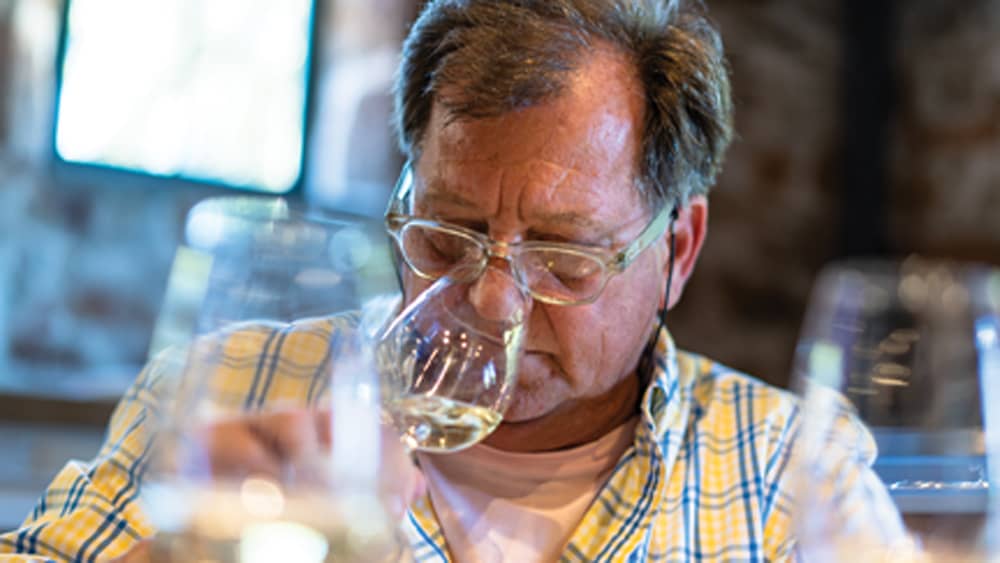
“We had fallen in love with the community and knew how to build brands, and by then [the early ’90s] we decided it was time to build our own equity,” John says. “We launched our brand in 1996 and named it Lang & Reed after the boys.
The names had deep family roots. Reed is the maternal family name on John’s side and Lang is Tracey’s maternal family’s name. Besides that, John says, calling it Skupny seemed more appropriate for “either a beer or a jar of pickles.”
The idea for Lang & Reed was simple on paper, but harder to execute. The goal was that within 10 years they wanted to make one of the top-10 best Cabernet Francs coming out of California, while at the same time keep the prices affordable. “We’d learned from Dan Duckhorn that the best way to create a successful Napa Valley wine brand was to pick a single focus [one varietal] and become the best,” says John. “Then we might expand the portfolio to include other wines.”
Another revelation they gleaned from their work with Soter was that making another Napa Valley Cabernet Sauvignon immediately put them in competition with hundreds, if not thousands, of alternatives. It also meant that they’d be paying top dollar for Cabernet Sauvignon grapes, while—at least at that time—Cabernet Franc grapes were a relative value. “Cab Franc was not locked into an image, which meant we could have some fun and explore while at the same time help define the category,” says John. “The grapes were also cheaper, but that has changed.”
According to the United States Department of Agriculture, the price per ton of Napa Valley wine grapes shows that in 1996 the average price for 1 ton of Cabernet Sauvignon was $1,800, whereas a ton of Cabernet Franc cost $1,646. Fast forward to 2019, and the same ton of Cabernet Sauvignon cost on average $7,865, while a ton of Cabernet Franc cost roughly $1,500 more.
Part of the price increase in Cab Franc is directly due to a limited supply. In 1996 the Napa Valley had 10,126 acres of Cabernet Sauvignon, but this more than doubled by 2019 to more than 22,000 planted acres. In contrast, Cabernet Franc comprised 788 planted vineyard acres, and in 2019 that had only grown to 1,166 acres.
In 1993, the couple purchased a small amount of Cabernet Franc from Doug Stanton (of Stanton Vineyards in Oakville), and over the years they’ve searched the Napa Valley and beyond for other sources.
Today, Lang & Reed produces roughly 3,000 cases each year of mostly Cabernet Franc, a little Chenin Blanc and on occasion, a small amount of a red Bordeaux blend called Right Bank.
Second generation
When Reed was training to be a winemaker, he travelled to France to work with Bernard Baudry in Chinon. Megan, Reed’s girlfriend at the time, joined him. There they both fell deeper in love with each other and also with the region. The couple married in Europe and held a reception in Vouvray. They both came away from the experience with a deep appreciation for Chenin Blanc.
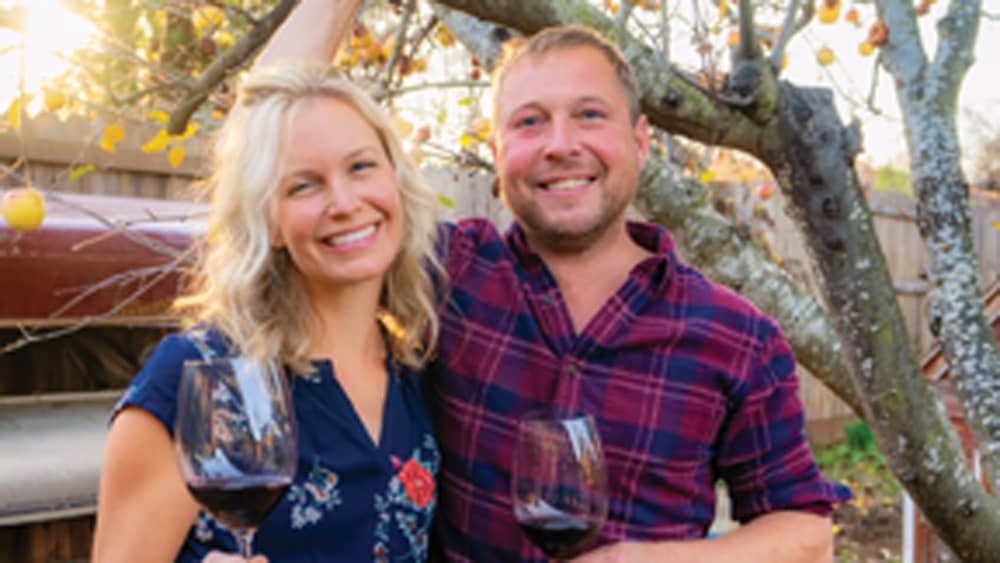
When they returned home, after “some arm-twisting” John agreed to add Chenin Blanc to their lineup. “I was a little reluctant at first,” he says. “Finding Chenin is even more rare than Cab Franc—but it has been really exciting to add it to the lineup. Not only because it’s a wonderful wine in its own right, but because it also complements Cab Franc at the table.”
Reed’s day job is as director of winemaking at Napa Valley’s Bevan winemaking services owned by phenom Russell Bevan, and Bevan’s wines are notably some of the most highly sought-after wines in the valley. He and Megan are most actively involved with the day-to-day of the Lang & Reed brand, whereas Jerzy Lang has become a farmer at The Apple Farm in Philo, Calif., along with his wife, Rita. Their daughter, Alex, has a love for wine, too. She worked in hospitality at St. Supery during summer breaks and has her WSET 1 level certification, but has pursued her university training in neuro and cognitive science, working in San Diego at UCSD Medical Center for the VA.
“Like his father, Reed is a man of strong conviction,” says Bevan. “He has a vision and works tirelessly to make a wine that fits his vision of excellence. Change happens faster now than ever before, and the singular consistent style of Lang & Reed is a revelation to people. The combination of excellent vineyard sites and crafting wines that are dedicated to energy and balance captures people’s attention.”
What’s next for Lang & Reed?
Since 1996, Lang & Reed has crafted small amounts of wines from some of the rarest vineyards in Northern California. Over the years, they’ve often survived by holding multiple jobs at other wineries to make this happen. This has meant being economical, creative and crafty in ways that other bigger operations need not be. The result is that their wines are different. Delicious, yes, but these wines tell a story, one that is complex and nuanced, while remaining fun and approachable.
“Tracey and I plan on retiring in three to five years,” says John, “and it’s wonderful to see the family so engaged in leading the brand into the future.”
He paused for a moment, gazing out at the empty tasting room, a room that would be otherwise full if not for the restrictions due to the pandemic.
“We’ve been through tough times before,” he says. “We’ll get through these, too.”
Author
-

Tim Carl lives, writes and teaches in Calistoga. He grew up in St. Helena and traces his Calistoga grape-growing roots back five generations. You can reach him at tcarl@northbaybiz.com.
View all posts


